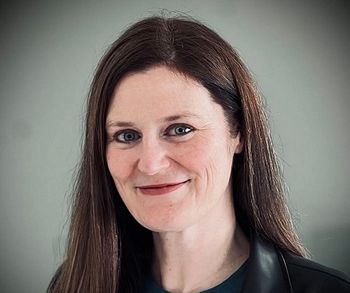
Tech Is Targeting Diabetic Retinopathy. But What Does the Market Look Like?
Algorithms and AI are only part of the equation.
As tech heavyweights like Google and any number of algorithm-driven startups eye solutions to diabetic retinopathy, the market is poised to heat up. But to understand the impressive growth that’s expected to come — and why so many cutting-edge companies are targeting this disease — it’s important to look at the market as a whole.
Billions of people each year face vision loss related to diabetes, a condition that affects more than 8 percent of Americans. But a significant number of cases associated with diabetes and diabetic eye diseases go undetected, as patients ignore routine checkups. As a result, diabetic retinopathy occurs.
>>
Diabetic retinopathy is an eye disease that occurs when there is severe damage to the retina because of diabetes. If proper treatment is not taken, it may lead to bleeding of eye, cloudy vision or the destruction of the retina. In fact, diabetic retinopathy is among the most common causes of vision loss in the diabetic population, ultimately leading to blindness.
Laser Treatment for Diabetic Retinopathy
Laser treatment targeting damaged tissue is the prime treatment for diabetic retinopathy. Over the course of several treatments, lasers hit leaking blood vessels by a spot-welding method that seals the area of leakage. In addition, lasers can be used to destroy tissue in the periphery of the retina, which is not required for functional vision. This treatment is used only when there is less blood supply to a more prominent central portion of the retina to maintain healthy sight. When the cells in the peripheral retina are destroyed, the amount of vascular endothelial growth factor (VEGF) is reduced, along with the potential to recreate abnormal retinal blood vessels.
There are two main types of laser treatments: focal or grid laser photocoagulation and scatter (panretinal) laser photocoagulation. In focal or grid laser photocoagulation treatment, individual blood vessels are targeted. The laser energy is aimed directly at the area to destroy damaged retinal tissue and clear blind spots and vision loss. In scatter laser photocoagulation treatment, roughly 1,200 to 1,800 tiny spots of laser energy are applied to the periphery of the retina, except the central area. Such laser treatments are not meant to improve vision but to prevent further vision loss. Thus, non-laser treatments are gaining more popularity.
Anti-VEGF Drugs and Vitrectomy For Reversing Diabetic Retinopathy
There are several studies that show that the anti-VEGF drugs can be used to halt and reverse diabetic retinopathy. Anti-VEGF are the medicines or drug-releasing implants such as Iluvien, Ozurdex, Eylea and Lucentis, which are injected into the eye.
Lucentis gained Food and Drug Administration approval in 2017 for the treatment of diabetic retinopathy. According to clinical trials, up to 42.5 percent of patients who were treated with Lucentis gained at least 15 letters in best corrected visual acuity (BCVA) on a standard eye chart in two years. Furthermore, another study concluded that Lucentis injections, combined with photocoagulation, were more effective than the laser treatments for diabetic retinopathy.
Another anti-VAGR, called Ranibizumab, was approved in April 2017 by the FDA for treatments of all kinds of diabetic retinopathy. Secondary analysis of several anti-VEGF, including Ranibizumab, demonstrated that the advantages of the usage of anti-VEGF in halting and, in several cases, reversing diabetic retinopathy.
>>
Recently, a Belgian biotech named ThromboGenics conducted the
Scientists have observed that early stage vitrectomy for diabetic retinopathy can be the most cost-effective and better treatment than ranibizumab. A research group at the University of Miami’s Miller School of Medicine conducted an analysis on the basis of the results from the Diabetic Retinopathy Clinical Research Network (DRCR) Protocol S. They used data from the Centers for Medicare & Medicaid Services to calculate the total cost models for in-facility and non-facility settings. The team
Diabetic Retinopathy’s Future
All of this, of course, complements a rise in technological advancements, which have boosted the market for diabetic retinopathy. Google, IDx, DreaMed and other ambitious health-tech ventures have targeted the diseases and, in some cases, gained FDA approvals.
What does it all mean? According to
Get the best insights in healthcare analytics
Related






































